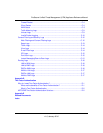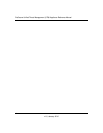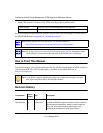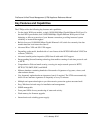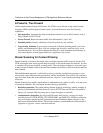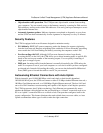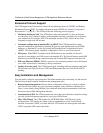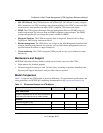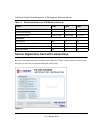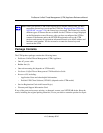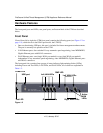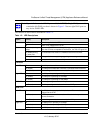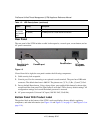
ProSecure Unified Threat Management (UTM) Appliance Reference Manual
Introduction 1-5
v1.0, January 2010
• Objectionable traffic protection. The UTM prevents objectionable content from reaching
your computers. You can control access to the Internet content by screening for Web services,
Web addresses, and keywords within Web addresses. You can log and report attempts to access
objectionable Internet sites.
• Automatic signature updates. Malware signatures are updated as frequently as every hour,
and the UTM can check automatically for new signatures as frequently as every 15 minutes.
Security Features
The UTM is equipped with several features designed to maintain security:
• PCs hidden by NAT. NAT opens a temporary path to the Internet for requests originating
from the local network. Requests originating from outside the LAN are discarded, preventing
users outside the LAN from finding and directly accessing the computers on the LAN.
• Port forwarding with NAT. Although NAT prevents Internet locations from directly
accessing the PCs on the LAN, the UTM allows you to direct incoming traffic to specific PCs
based on the service port number of the incoming request. You can specify forwarding of
single ports or ranges of ports.
• DMZ port. Incoming traffic from the Internet is normally discarded by the UTM unless the
traffic is a response to one of your local computers or a service for which you have configured
an inbound rule. Instead of discarding this traffic, you can use the dedicated De-Militarized
Zone (DMZ) port to forward the traffic to one PC on your network.
Autosensing Ethernet Connections with Auto Uplink
With its internal 4-port 10/100/1000 Mbps switch and single or dual (model dependant)
10/100/1000 WAN ports, the UTM can connect to either a 10 Mbps standard Ethernet network, a
100 Mbps Fast Ethernet network, or a 1000 Mbps Gigabit Ethernet network. The four LAN and
one or two WAN interfaces are autosensing and capable of full-duplex or half-duplex operation.
The UTM incorporates Auto Uplink
TM
technology. Each Ethernet port automatically senses
whether the Ethernet cable plugged into the port should have a “normal” connection such as to a
PC or an “uplink” connection such as to a switch or hub. That port then configures itself to the
correct configuration. This feature eliminates the need to think about crossover cables, as Auto
Uplink accommodates either type of cable to make the right connection.



